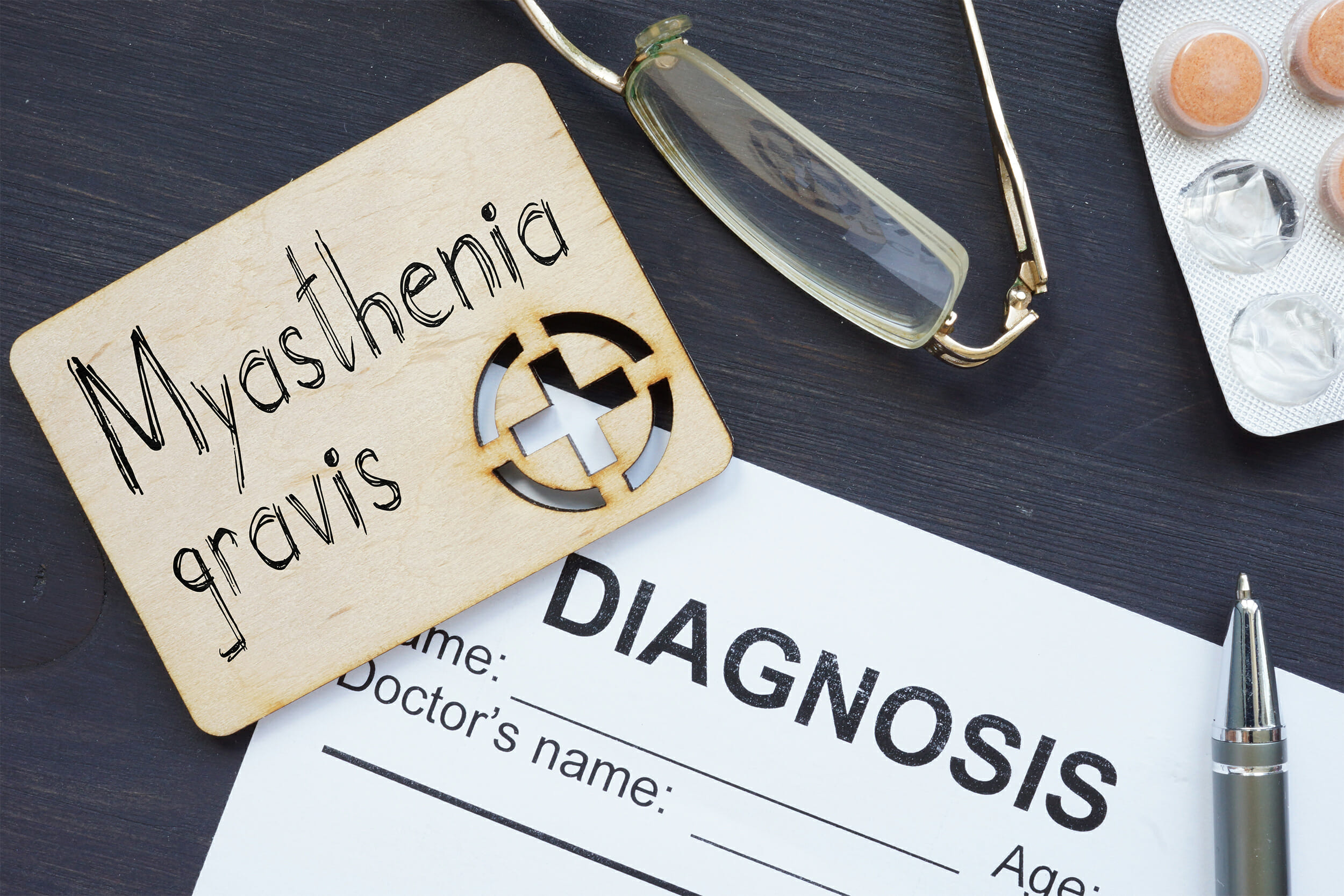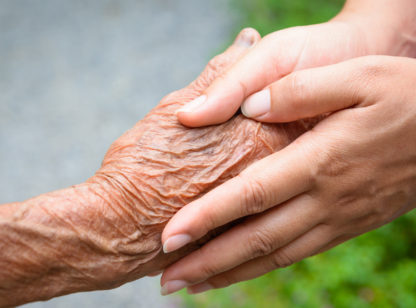Imagine eating dinner with friends and struggling to chew your baked potato, giving a presentation at work when suddenly you start slurring your words or walking up the stairs of your home and finding yourself out of breath. Your legs don’t want to lift the way they should, and when you reach the middle step, you have to sit down and rest before you’re able to continue.
Imagine having people think you’re too serious because you don’t smile often. What they don’t know is that weakness of your facial muscles prevents you from easily curving your mouth upward.
These are just some of the symptoms you might experience if you have myasthenia gravis (MG). This rare, neuromuscular, autoimmune disease has been diagnosed in more than 70,000 people in the United States – and likely more remain undiagnosed.
Those with MG suffer from profound, debilitating physical symptom, such as extreme fatigue and muscle weakness that impact their ability to see, swallow, smile, walk or breathe. MG can occur in anyone of any age, gender or race, though it’s more prevalent in adults.
MG is a disease of the neuromuscular junction – the space between a nerve ending and muscle fiber. In essence, the brain sends a message, but like an email blocked by a firewall, the message isn’t received and the muscle doesn’t activate properly.
When a nerve impulse from the brain arrives at the nerve ending, it releases a chemical called acetylcholine which travels across the junction space to the muscle fiber, where it attaches to many receptor sites. The muscle contracts when enough of the receptor sites have been activated by the acetylcholine.
For someone with MG, there can be as much as an 80% reduction in the number of receptor sites. This happens because an antibody – normally the body’s protector against bacteria and viruses – destroys or blocks the receptor site.
People with MG may struggle to get accurately diagnosed. There are a number of reasons for this, including:
- MG symptoms like droopy eyelids, slurred speech and double vision can mimic other, more common conditions like stroke or multiple sclerosis.
- Symptoms can vary between people, making it difficult for medical professionals to identify without specialized tests.
- A blood test for specific antibodies is the most common diagnostic tool, but not everyone with MG can have their diagnosis confirmed this way. They must undergo additional tests that are difficult to access and conduct.
Once a person does receive an MG diagnosis, many treatments are available to improve symptoms and help them feel better. With treatment, many people with MG can lead long, full lives.
Medications such as Mestinon®, Prednisone, VYVGART®, Ultomiris®, and Soliris® reduce muscle weakness in many people with MG. In fact, if your doctor suspects you have MG but you’re waiting on diagnostic results or if your blood test for relevant antibodies is negative, he or she may give you a dose of Mestinon. If you see immediate improvement in your symptoms, doctors consider this an indicator that you have MG.
Patients may also undergo plasma exchange, which filters abnormal antibodies from the blood, or intravenous immune globulins infusions, which is thought to override a person’s own antibody production.
A thymectomy, which is a surgery to remove the thymus gland, can also improve or eliminate symptoms in some patients. This gland plays a role in the production of antibodies.
While there’s currently no cure for MG, researchers around the globe are investigating the disease, and each year, uncover more about this rare disorder.
The Myasthenia Gravis Foundation of America (MGFA) is the largest, leading MG patient advocacy organization in the United States. MGFA supports this work by funding the most promising research discoveries for better treatments and a cure. Recently, the foundation relaunched a global registry for MG patients, which will provide real-world patient data to researchers in order to support clinical trial development.
Many people find solidarity with other patients on social media, while advocacy organizations are proven resources for education and community. At the MGFA, conferences for patients and practitioners drive awareness of the latest research and help forge connections. Wellness and research webinars and health fairs educate people on managing symptoms, navigating the health care system, and more. MGFA’s resources and strong relationships with medical professionals and MG experts around the world enable the provision of powerful, impactful programs for those living with this disease.
Support groups are a wonderful resource to confidentially connect with other patients to share guidance and lived experience. Those living with MG, and their caretakers, are invited to join the MGFA Southern California MG Support Group. Virtual meetings are held quarterly, and the 2023 meeting dates are March 4, June 10, September 9 and December 9 from 9-11 a.m. Specialty support groups are also available, including a Spanish-language group; MAYA, a group for young adults; and the Seronegative Support Group, for those without known antibodies related to MG.
People with rare and chronic diseases don’t have to go it alone. If you have MG or another rare disease, find resources to help you navigate the path.
Kate Stober is with the Myasthenia Gravis Foundation of America. To register for the MGFA Southern California Support Group, contact Group Leader Connie DiPasqua of Indio at [email protected]. For additional information, visit www.myasthenia.org.

















































Comments (0)